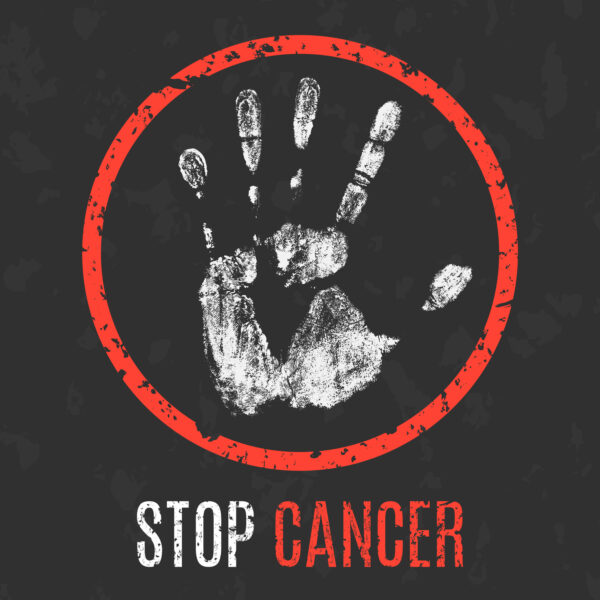
Cancer remains the second most common cause of mortality in the U.S., and according to recently published data from 17 National Cancer Institute registries, younger adults are increasingly diagnosed with common cancers. Specifically, cancers in patients under 50 years old rose by an average of 0.28% annually over the last several years, with gastrointestinal and breast cancers showing the greatest increase in cases diagnosed each year.
With such disheartening statistics, it is critical that we focus on providing truly personalized treatments that ensure patients enjoy both increased quality time and prolonged survival. Many patients must weigh whether the harms of drugs recommended to treat their cancers outweigh the benefits as they see them, according to their own natures and goals.

With the Rise of AI, What IP Disputes in Healthcare Are Likely to Emerge?
Munck Wilson Mandala Partner Greg Howison shared his perspective on some of the legal ramifications around AI, IP, connected devices and the data they generate, in response to emailed questions.
Historically, cancer care has been based on the origin of the cancer and how far it has spread, which is commonly referred to as the stage of the cancer. But now, healthcare providers can look at the particular genes in a patient’s cancer and recommend much more targeted treatment plans that best fit with the genetic fingerprint of both the tumor and the patient themselves. Personalized oncology also means that besides the origin and the stage of a person’s cancer, the treatment of an individual’s cancer should also depend on the RNA expressed from those genes, the proteins that cancer produces, and the patient’s inherited genes that affect the benefit of the treatment and its toxicity.
Although the definition is evolving, truly personalized cancer care might be thought of as having four major pillars: interrogation of the cancer, predictive testing, inherited genes, and patient lifestyle, values and goals.
Interrogate the cancer
Recommended treatments are now often based on targeting the unique features that characterize each patient’s cancer. Going back to a basic principle of biology – The Central Dogma of Biology – our normal cells function based on the genes they contain and the proteins they express. But in cancer cells, there are alterations in the genes and proteins produced that cause the cancer cells to rapidly reproduce, invade, and spread to distant places in the body.
Cancers are now routinely “interrogated.” Each cancer’s genetic and protein fingerprint can be determined in the laboratory by taking advantage of the remarkable scientific and technological advancements made in the last 50 years.
For example, lung cancer is by far the most common cause of cancer deaths worldwide. In fact, if you add up the second (colorectal cancer), third (breast cancer), and fourth (pancreatic cancer) most common causes, those do not surpass the number of patients who die of lung cancer annually.
Among the first truly targeted therapies were drugs called tyrosine kinase inhibitors (TKIs). The chance of the average non-small-cell lung cancer (the most common type of lung cancer) shrinking (i.e., response rate) with a TKI was only roughly 4%. Then scientists in Boston found that if a specific gene called EGFR is mutated in the cancer cells, the response rate was closer to 70% by treating with the exact same TKI. Now, even more mutations have been found, leading to other highly targeted therapies being approved by the U.S. Food and Drug Administration.
It’s now the standard of care to test for these mutated genes when deciding how to treat non-small cell lung cancer–thus, more personalized, effective treatment options are available for many patients. Other cancer types harbor the same or other mutated genes that predict other targeted therapies which are highly effective.
Tests that predict treatment benefit
Another advancement in oncology involves applying a different biomarker test that identifies the pattern of RNA or protein expression. These biomarkers are now routinely used to estimate, or even precisely predict, not only the risk of recurrence but how effective certain classes of therapies will be.
For example, most breast cancers make estrogen receptor proteins and are called hormone receptor positive. For roughly 50 years, nearly all patients with early-stage, hormone-receptor positive invasive breast cancers have been encouraged to take five years of endocrine therapy after surgery. Endocrine therapy either prevents the body from making estrogens or prevents the cancer from using estrogens in the body to grow, and these endocrine therapies will reduce the risk of the cancer coming back after surgery (i.e., recurrence) by around 40%.
Most patients must consider (before five years of endocrine therapy) whether to endure the hardships of chemotherapy after surgery to reduce the risk of their cancer recurring. Current national guidelines recommend a biomarker test called Oncotype DX which can distinguish those patients (based on the RNA expression profile of their cancer) who will from those who will not benefit versus those who will not benefit from chemotherapy.
More recent studies have shown that taking an additional five years of endocrine therapy may reduce recurrence risk further, but only by about 4%. Endocrine therapy for the additional five years can greatly impact some women’s quality of life, so it is critical that if this medication is prescribed for the additional five years, we are confident that it will reduce the risk of recurrence.
The Breast Cancer Index test* is recommended in standard-of-care guidelines to not only estimate the likelihood of a patient’s breast cancer recurring during years 5-10 after surgery but also whether or not the patient will benefit from 10 total years of endocrine therapy versus discontinuing endocrine therapy after five years.
Determine the patient’s inherited genes
Although it is well understood that certain inherited genes can increase a patient’s likelihood of developing cancer, it has been determined that inherited genes may also predict a patient’s likelihood of benefiting or experiencing life-threatening toxicities from cancer treatments.
For example, one of the most well-known mutations, BRCA, is associated with significantly elevated risks of developing breast cancer. However, breast cancers in patients who carry an inherited BRCA mutated gene have roughly a 60% likelihood of their tumors responding (i.e., shrinking) when treated with highly targeted therapies called PARP inhibitors.
On the other hand, certain genes dramatically affect how certain drugs are metabolized by the body. In some instances, a patient who has inherited a particular version of a gene could have a life-threatening toxicity if treated with a specific drug if, for example, the inherited gene cannot express the proteins to properly metabolize that drug in the body. As a result, several major guidelines now suggest testing for these inherited versions of genes prior to prescribing certain drugs.
Understand the patient’s values and goals
Ultimately, patients make their own decisions about the therapies they receive according to their own values, goals and beliefs. One patient might be eager to receive a drug with only a 20% chance that it will help them, but another patient could decline that treatment when they are told about certain associated side effects. As a result, it’s critical that we educate patients about the potential harms and benefits associated with each therapy option, so they can make informed decisions about the treatments that make the most sense to them by being consistent with the way they hope to live their lives.
Conclusions
The four pillars of personalized cancer care involve 1) interrogating the cancer to identify its unique fingerprint of genes and protein alterations 2) applying biomarker assays that suggest whether or not targeted or non-targeted therapy will be effective and how effective 3) evaluating the patient’s background DNA for inherited variants of genes that predict side effects and efficacy of available therapies and 4) making certain that the patient’s hopes, values and nature are considered in decision making.
As Hippocrates said, “it is more important to understand the patient who has the disease than to understand the disease the patient has.” Truly personalized cancer care has arrived, and patients are reaping the benefits.
Photo: Main_sail, Getty Images
*Editor’s Note: The author is an employee of Biotheranostics, the creator of the Breast Cancer Index test.
Dr. Steven Sorscher is Medical Director, Oncology at Biotheranostics, Inc. He received his undergraduate degree from Yale University, graduated from the University of Michigan Medical School where he also completed his residency in Internal Medicine. He completed his fellowship training in Hematology /Oncology at the University of California, San Diego (UCSD).
Over the past 35 years, Dr. Sorscher has held medical oncology community practice positions at the Gundersen Clinic in LaCrosse, WI and the Marshfield Clinic in Wausau, WI. He also held faculty appointments at UCSD, Duke University in Durham, NC, and Washington University in St. Louis. During the past eight years, Dr. Sorscher was a Professor of Medicine in the Oncology Division at the Wake Forest Medical School, in Winston-Salem, NC, followed by one year as the Medical Director, Oncology at Invitae, Corp. Dr. Sorscher has authored over 140 peer-reviewed publications and four book chapters covering a wide range of topics including breast cancer and hereditary cancer syndromes.














